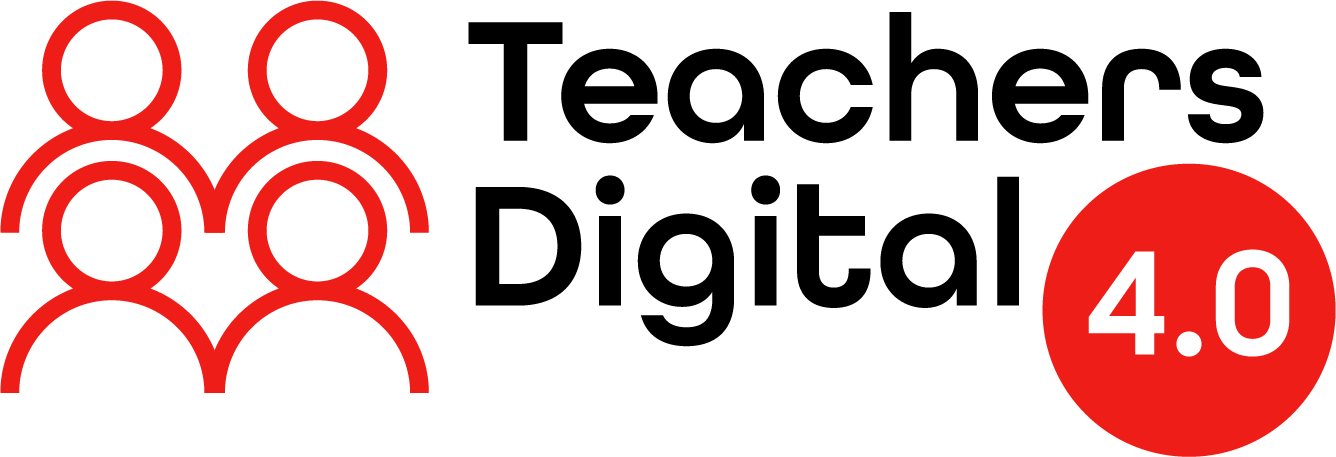
Within the Teachers 4.0 Digital project, Mediawise Society was responsible for the development of Module 6: Exploring the Key Media Practices of Children and Students. The module was created from scratch, drawing on relevant research and theoretical frameworks to provide a comprehensive and engaging resource for teachers. This work involved not only the drafting of the full theoretical content, but also its structuring into a digestible e-learning experience. Interactive elements —such as online resources, videos, and quizzes were added, and the material was fully adapted to the project’s digital platform.
This process —part instructional design, part digital storytelling —served as a reminder that, in media and digital literacy education, the way knowledge is presented is just as important as the knowledge itself.
From Dense Theory to “Digestible Learning”
The original script for Module 6 incorporated a wide range of theoretical perspectives — from constructivist learning and critical pedagogy to media ecology and the EU Kids Online model. It included insights from research and policy (UNCRC, General Comment No. 25), and positioned media practices as a gateway into understanding the rights, risks, and opportunities faced by young people in digital environments.
For in-service teachers’ training, the challenge was to preserve the academic depth of the content while making the module accessible to busy teachers, many of whom may be engaging with these frameworks for the first time. This required:
- Segmenting the text into manageable, “bite-sized” units aligned with the principles of digital learning. Rather than overwhelming readers with dense theory, key approaches —such as constructivism, situated learning, and critical pedagogy — were broken into short, focused sections. Each section includes a clear heading, a concise explanation, and a direct link to how it supports teachers in engaging with students’ digital lives.
- The inclusion of videos, links, and real-world examples to bring abstract concepts to life, offering teachers accessible ways to dive deeper without feeling overwhelmed.
- The design of a final quiz intended to promote reflective learning rather than simple factual recall. The quiz moves beyond the memorisation of terms and includes thought-provoking questions that challenge common assumptions and get teachers thinking critically about what they think they know about students’ digital habits.
- Ensuring that the content felt relevant and actionable for educators across Europe. The material was carefully aligned with practical classroom applications—for example, using students’ own media habits to stimulate discussions about disinformation or exploring rights-based approaches through the UNCRC and General Comment No. 25. Real tools for real classrooms.
This process represented more than an editorial challenge; It was also an exercise in empathy: How can teachers be supported in understanding their students’ media cultures without becoming overwhelmed?
Why Students’ Media and Digital Practices Matter
One of the central messages in Module 6 is the importance of beginning with from students’ own media habits when teaching about digital literacy, critical thinking, or disinformation.
This approach, grounded in constructivist and culturally responsive pedagogies, emphasises that students are not blank slates. They are already immersed in media environments—regularly interpreting, remixing, and sharing information. Effective media education does not overlook this reality; rather, it takes it as a starting point.
By building upon students’ real-life digital experiences, teachers can create more engaging lessons, encourage deeper learning, and even promote children’s rights in digital contexts—such as freedom of expression, participation, identity and privacy. This approach is especially relevant in an era characterised by information pollution, in which students are exposed not only to disinformation, but also to subtle manipulations that influence their perceptions and identities online.
Lessons Learned from the Process
- Several insights emerged during the development of this contribution that are considered valuable to share: Designing for teachers means respecting their time and professional expertise. Every extra paragraph or unclear concept is a potential barrier. Simplicity should not be mistaken for simplification — it’s a form of respect.
- Modules of this kind represent more than just training content. They contribute to a broader cultural shift, empowering educators to feel more confident and better prepared to support students navigating complex media environments.
- Even when a module is developed from the ground up, the pedagogical choices made —relating to structure, language, tone, and activity design — have a significant impact on how (and whether) the material resonates with its intended audience. Every decision, from the theoretical foundations to the framing of activities, directly influences how teachers engage with and implement the content in the classrooms.
Looking ahead
In the coming year, Mediawise Society will coordinate the continuous training of 200 teachers—a significant step towards integrating media and digital literacy into classrooms with confidence.
The course is designed to support teachers in their daily practice and to foster continued curiosity about students’ digital lives—not as distractions, but as opportunities for connection, dialogue, and shared learning.
This work has been made possible through the collaboration of Mediawise Society’s national partners, including the West University of Timișoara and the Ministry of Education and Research, both of whom play an essential role in advancing media education in Romania.






